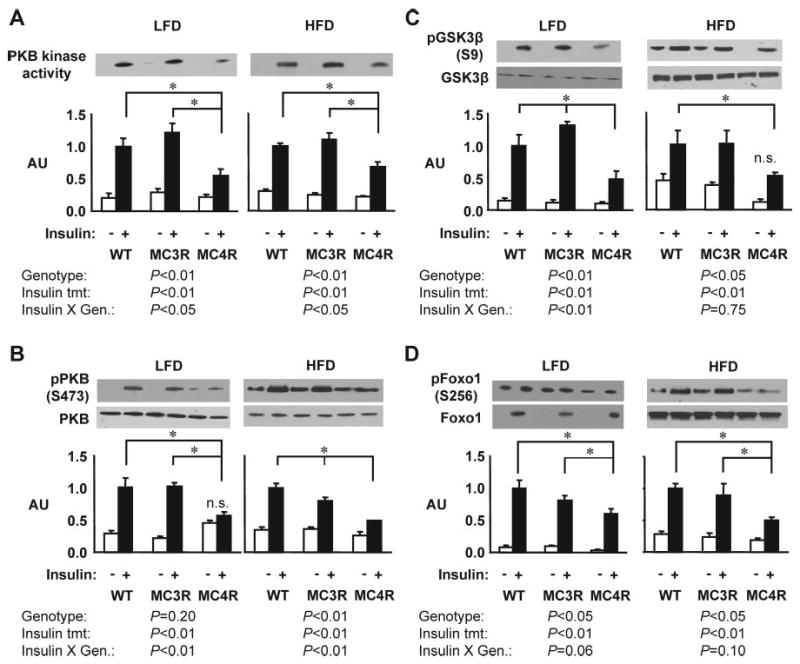Fig. 6.

Insulin signaling in liver is impaired in female Mc4rKO relative to WT and Mc3rKO, irrespective of diet. Representative Western blots and quantified data (n = 3 per group) are shown for basal (white bar) or insulin-stimulated (black bar) PKB kinase activity (A), phosphorylation of PKB on Ser473 (B), phosphorylation of GSK3β on Ser9 (C), or phosphorylation of FoxO1 on Ser256 (D). Quantified data were analyzed within diet using two-way ANOVA (independent variables were genotype and insulin treatment). Phosphospecific antibody data (B–D) was normalized for total protein content. For most outcomes measured, insulin-stimulated activity was reduced in liver of Mc4rKO (MC4R), irrespective of diet, compared with Mc3rKO (MC3R) and WT mice. Significant differences between groups are indicated by lines: *, P < 0.05. For PKB activity assessed by kinase assay (A) or serine phosphorylation (B), two-way ANOVA indicated that the degree of insulin stimulation was dependent on genotype. The effects of insulin treatment were statistically significant (P < 0.05), unless indicated otherwise (n.s., not significant). AU, Arbitrary units; LFD, low-fat diet (10% kJ from fat); HFD, high-fat diet (45% kJ from fat).
